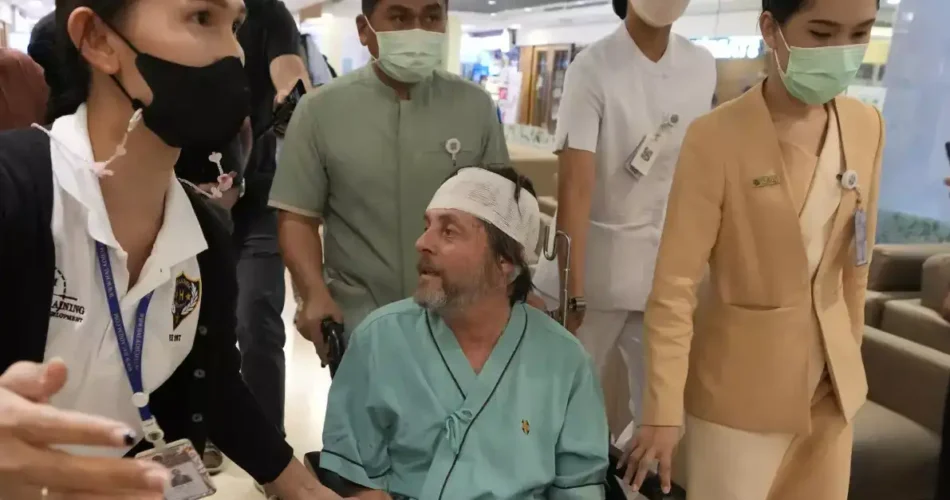BANGKOK – Many of the most seriously injured people on the Singapore Airlines flight that encountered severe turbulence need spinal surgery, a Bangkok hospital said Thursday.
Twenty people were still in intensive care and a 73-year-old British man died after the Boeing 777, traveling from London’s Heathrow airport to Singapore, descended sharply after encountering turbulence over the Andaman Sea on Tuesday.
A public relations officer at Samitivej Srinakarin Hospital, which has treated more than 100 people injured in the incident, told The Associated Press that other local hospitals have been asked to second their best specialists to assist in the treatments. He asked not to be identified in accordance with hospital rules.
Passengers have described the “terror” of experiencing the aircraft shaking, loose objects flying off and injured people paralyzed on the floor of the plane.
It remained unclear what exactly caused the turbulence that sent the plane, carrying 211 passengers and 18 crew, plunging some 1,800 meters (6,000 feet) in about three minutes. The flight from London to Singapore was diverted to Thailand.
In one of the most recent descriptions of the scenes of chaos on board, Malaysian passenger Amelia Lim, 43, explained how she had found herself face down on the floor.
“I was very scared (…) I saw a lot of people on the floor, everyone was bleeding. There was blood on the ground and on the people,” she told the Malay Mail online newspaper.
The woman who had been sitting next to him, he said, was “motionless in the aisle and unable to move, probably with a hip or spinal injury”, he said.
Authorities said the deceased Briton may have suffered a heart attack. Passengers have described how plane staff tried to revive him for about 20 minutes.
Most people associate turbulence with severe thunderstorms, but the most dangerous type is called clear air turbulence. Wind shear can occur in cirrus clouds or even in clear air near thunderstorms, as differences in temperature and pressure create powerful, fast-moving air currents.

